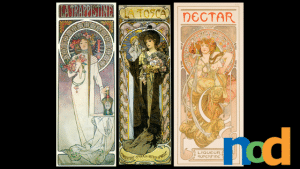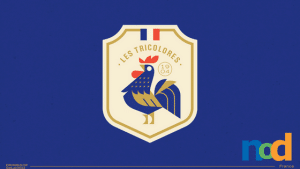Art in Motion: Les Nabis
by Taylor Slattery | January 4, 2022
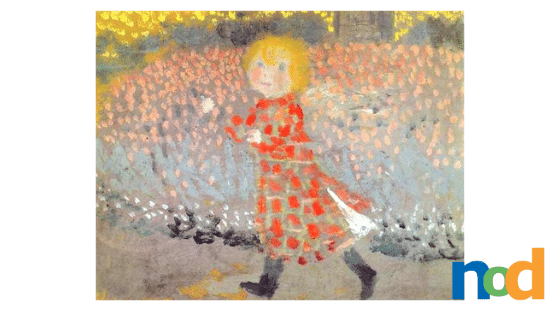
Child in an Apron orLittle Girl in a Red Dress, Maurice Denis (1889), Public Domain
Toward the tail end of the 19th century, a group of young Parisian painters at the Académie Julian would play a pivotal role in guiding the direction of western art.
The origins of the group that would come to be known as Les Nabis, lay with three artists: Paul Sérusier, Pierre Bonnard, and Maurice Denis. The painters were alumnus of Lycée Fontaine, another Parisian art academy, where the three had met prior to their enrolment at Académie Julian. Upon arrival at the famed private art academy, the trio received instruction from several notable instructors, one of which was renowned French painter Émile Bernard.
Now well-known for his correspondence with artists such as Gaugin and Van Gogh, Bernard would bestow a letter upon one of his new students granting him passage to study alongside his famous pen pal. Letter in hand, Sérusier, just 24 at the time, would head to Pont-Aven, located in northwestern France, where he would receive instruction from Gaugin.
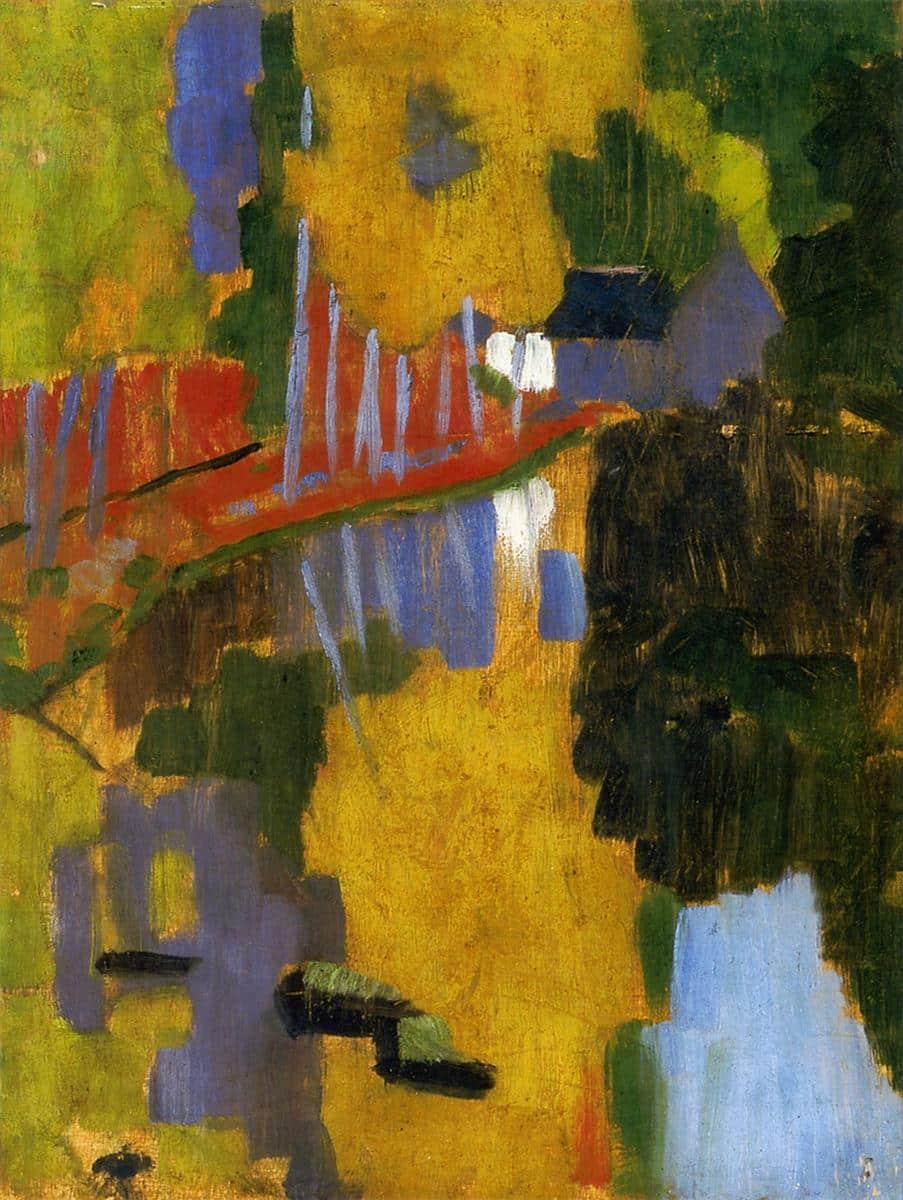
The Talisman, Paul Sérusier (1888), Public Domain
This encounter would prove to be fruitful. The Talisman, a painting created by Sérusier under the guidance of Gaugin, would mark the beginning of Les Nabis and become one of the group’s seminal works. The painting marked a stylistic departure from the popular Impressionist aesthetic of the time. Rather than giving the impression of a hurried plein air painting, The Talisman ventured more firmly into the realm of abstraction, trading the wispy numerous brushstrokes of Impressionism for solid, bold patches of color, as well as being markedly more geometric in appearance.
Upon his return to the Académie Julian, the painting was met with an enthusiastic reception. Sérusier and his fellow students had been searching for something new and had found what they were looking for in The Talisman. The painting, which was originally intended only as a study for a future work, had not been titled for this same reason. It was only upon the enthusiasm with which it was met, that the budding group would bestow it the honor of The Talisman, marking it as an important artifact in the group’s formation.
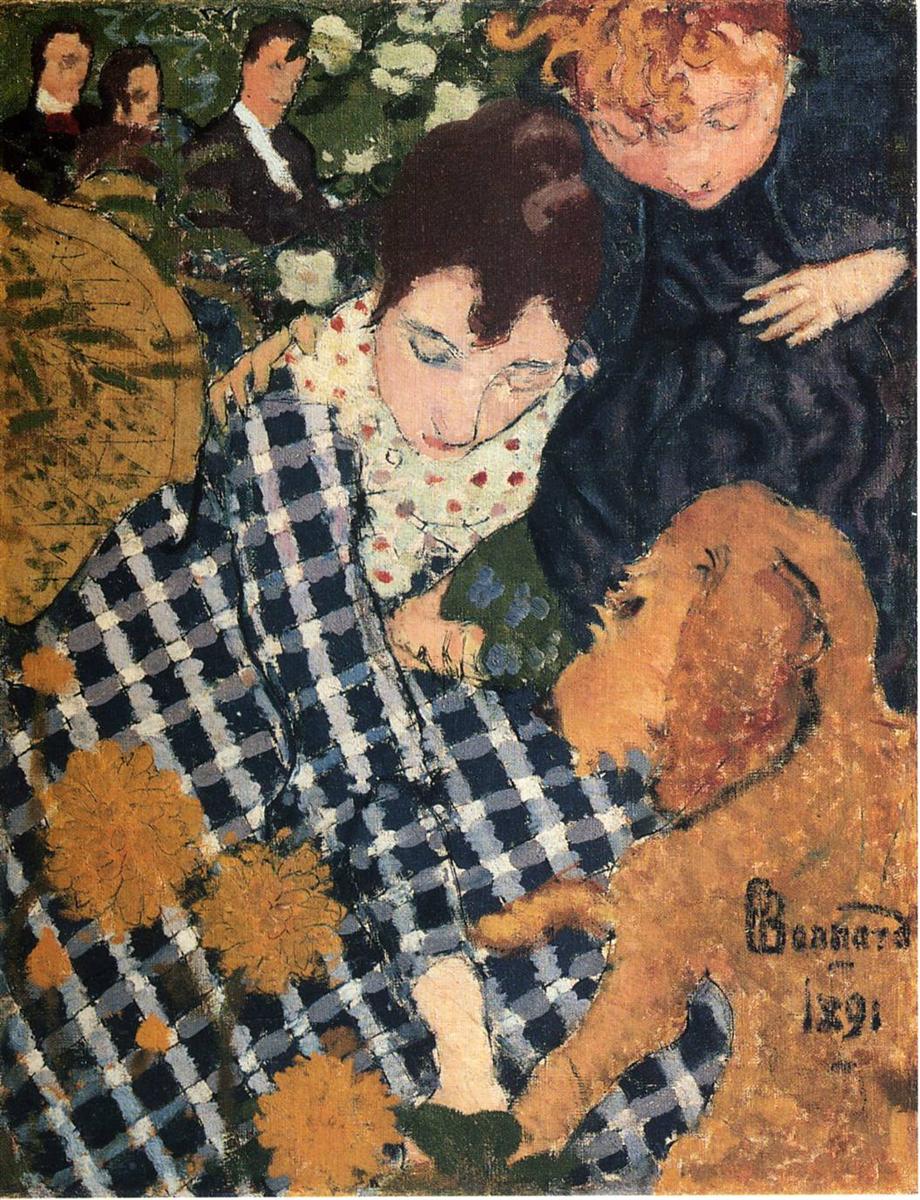
Woman with Dog, Pierre bonnard (1891), Public Domain
At the time, the painting stood in stark visual contrast with another budding movement, Neo-Impressionism, helmed by Georges Seurat. Though new, the Neo-Impressionists had already managed to establish themselves as a recognized movement. Rather than reject its tenets entirely, they sought to build upon foundations laid forth by Impressionism, infusing the movement’s objectives with technique, theory, and science. With an aim rooted primarily in the organization of color and exploration of luminance, the works of the Neo-Impressionists remained in the realm of realism while taking on a more graphic, at times illustrative quality.
In contrast, while still representational, the work of Les Nabis diverged from Impressionism and Neo-Impressionism, introducing a degree of abstraction. The reason for this was rooted in the group’s guiding philosophy, which placed the expressive qualities of a painting’s most rudimentary components, line and color, above subject matter in terms of importance. This wasn’t to say that the subject matter was unimportant in relation to the form of the painting, but that a painting’s beauty lies in the emotional impact expressed via the organization of the strokes and pigments themselves, rather than the objects they form.
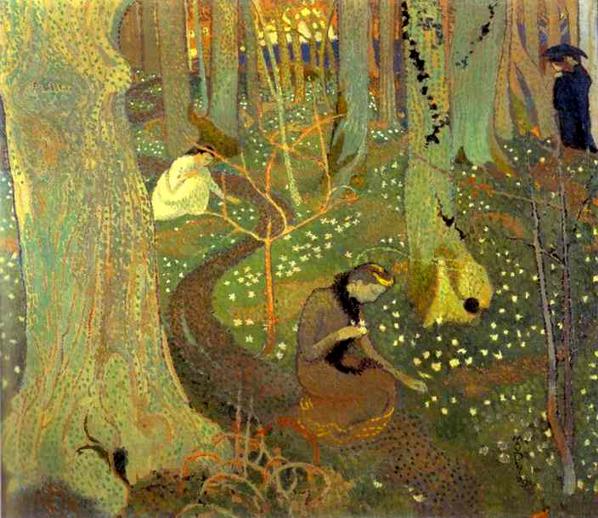
Early Morning or Easter Mystery, Maurice Denis (1891), Public Domain
The painting wasn’t merely a depiction of nature, but a collection of symbols translated via color and shape. The emotional meaning the artists aimed to communicate wasn’t to be found in the subject matter itself, but rather how it was presented. This allowed Les Nabis to infuse their work with symbols and metaphors in a non-literal way, likening objects to others via color and quality of line. This idea of form and process taking precedence over representation would serve as a foundational idea for future thinking in abstract and modern art.
Les Nabis believed style to be the influence of the individual artist upon an object, with the artist’s personality and experiences informing his choice of line and color. For this reason, unlike other movements, the works created by Les Nabis don’t bear a strong visual resemblance to one another. As a group, they were more unified in intent and by location rather than by style or subject matter.
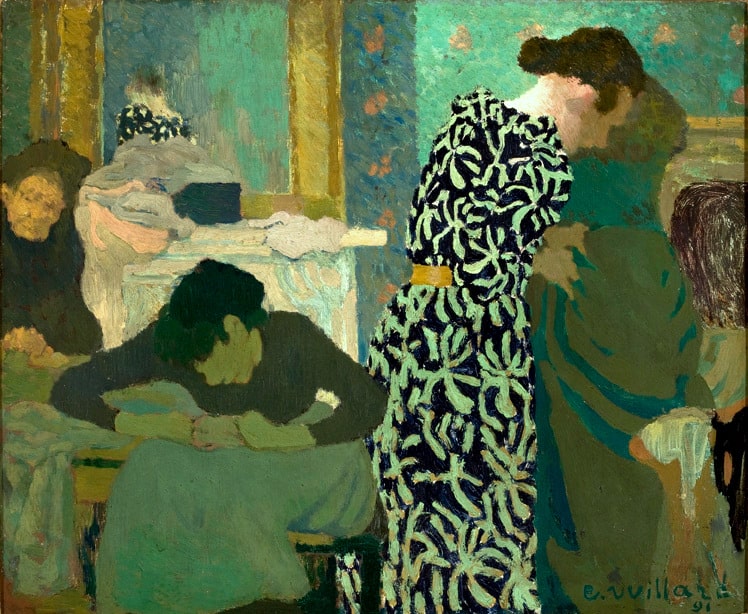
The Flowered Dress, Edouard Vuillard (1891), Public Domain
Eventually, 12 years after their formation, the group would hold one final exhibition before parting ways. While the group remained largely unknown within the broader art world, due in part to their secretive ways, their work marked an important stepping stone in the evolution of European art. Their exploration of the subjective role of the painter rather than just the objective nature of the subject matter itself served as a bridge between Impressionism and the modern, avant-garde movements that would follow.

Taylor is the Managing Editor of Notes on Design. Taylor is a graphic designer, illustrator, and Design Lead at Weirdsleep.







